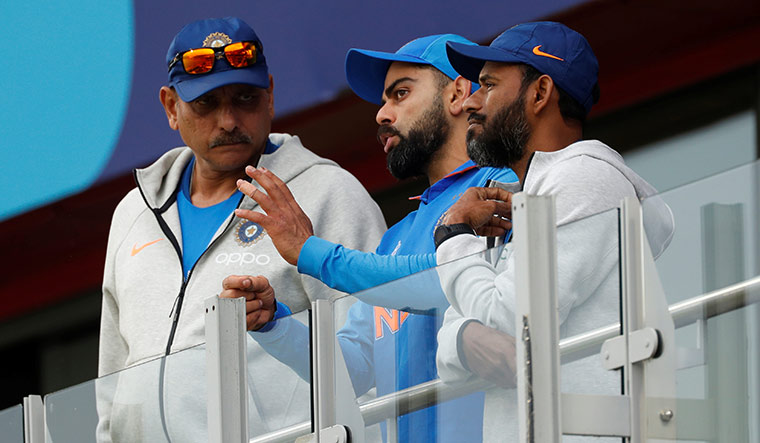The weather in England is always unpredictable. Surprisingly, the International Cricket Council did not consider this major issue while charting out the schedule of the ongoing Cricket World Cup. A well-structured programme to combat and protect against all eventualities should have been designed. The schedule, which does not provide a reserve day for rain-affected matches, is a topic of concern. This will definitely lead to criticism and bitterness among those affected.
Cricket has always been a game associated with war-like tactics. Cricketers have to be careful, precise and patient in their approach. The famous words of the Duke of Wellington after the Seventh Coalition’s victory over Napoleon Bonaparte was: “The battle of Waterloo was won on the playing fields of Eton.”
While technology and the modern tools of data analysis have made cricket more scientific, the basic elements like on-field tactics and strategies are still the most important ingredients for a win. The traditional game plan and new technology have added zing to the preparation, planning and tactics of all teams. Knowledge may be power, but in an unpredictable game like cricket, constructive and innovative leadership on the field still rules the roost.
The first over of the opening match of this World Cup (South Africa vs England) saw a surprising move by the Proteas. They opened their campaign with leg spinner Imran Tahir. Bingo! Tahir got the dangerous Jonny Bairstow out, but in the excitement of his success, South African captain Faf du Plessis, continued with his plans for a trifle too long. This fritted away the advantage that his brilliant move had achieved.
The next noteworthy move came from the West Indies. They unleashed a performance against Pakistan which was reminiscent of their old, forgotten style. A throwback to the 1970s and 1980s when West Indian cricket dominated the world through ferocious bowling and beautiful stroke-play. One always marvelled at the way Brazil played football and the calypso style of cricket from the West Indies. At the World Cup, it was not only good to see, but it also ignited a spark in the pace attacks of the other teams. The bouncer, slow or fast, has become an important wicket-taking ball for fast bowlers. Batsmen who were inclined to play shots off the front foot are now being forced on to their back foot.
There are two major tactical changes that one could see in the approach of most teams in the initial matches. The first 10 overs of Power Play with only two fielders allowed outside the 30-yard circle was earlier used for aggressive batting. The openers are now batting far more sensibly although they are positive in their approach. There is an element of caution rather than carefreeness. Therefore, we are seeing some good partnerships among the top three batsmen.
This approach creates a launch pad for the middle overs, rather than waiting for the final 10 overs. The four-fielder restriction outside the 30-yard circle—from overs 11 to 40—has accelerated the game in the period, which was earlier used for consolidation. The Indian think tank used it to perfection against Australia, when they promoted the hard hitting Hardik Pandya to No 4. His carefree knock was the differentiator in the win for India.
This World Cup is highly dependent on a team’s bowling performance. The captain has to be very clever in utilising his bowlers. Kohli led India brilliantly against Australia. The wicket was good and he used Kuldeep Yadav, Yuzvendra Chahal and pacers Bhuvneshwar Kumar and Jasprit Bumrah effectively. He curtailed the quick-scoring David Warner through his wrist spinners and managed to keep both Usman Khawaja and Steve Smith quiet. Eoin Morgan, the England captain, has used his pacers Mark Wood and Jofra Archer very cleverly. Kane Williamson, the New Zealand captain, is using his fast medium swing bowler, James Neesham, with pacers Lockie Ferguson and Trent Boult. Australia, unfortunately, are dependent on Mitchell Starc, their frontline pacer and his form is important for them to be a force to be reckoned with.
The traditional finger spinners seem to have lost their importance in this tournament. Maybe their time will come once the wickets become drier in the later part of June and in July. The wrist spinners are proving to be useful and with two of them in the line up, India have a good mix of fast and slow bowlers.
Field placement is an area that is proving to be the most important for captains. Understanding the topography of each ground, the slopes, distance and the wind factor has become a must. Balancing it astutely and understanding their bowlers, the batsman’s hitting zones and the placement of their fielders have become crucial. To see close catchers in slips, gully and even backward and forward short leg is a pleasant sight—this shows that there is a duel between the bat and the ball. For me, the two most important positions are short cover and short mid-wicket. This is an area where most captains are faltering as agile safe fielders are being placed in the outfield and not in these positions.
Good leadership out in the middle will be key to winning the World Cup. Modern technology will only take the captain so far.
Yajurvindra Singh is a former India cricketer.


